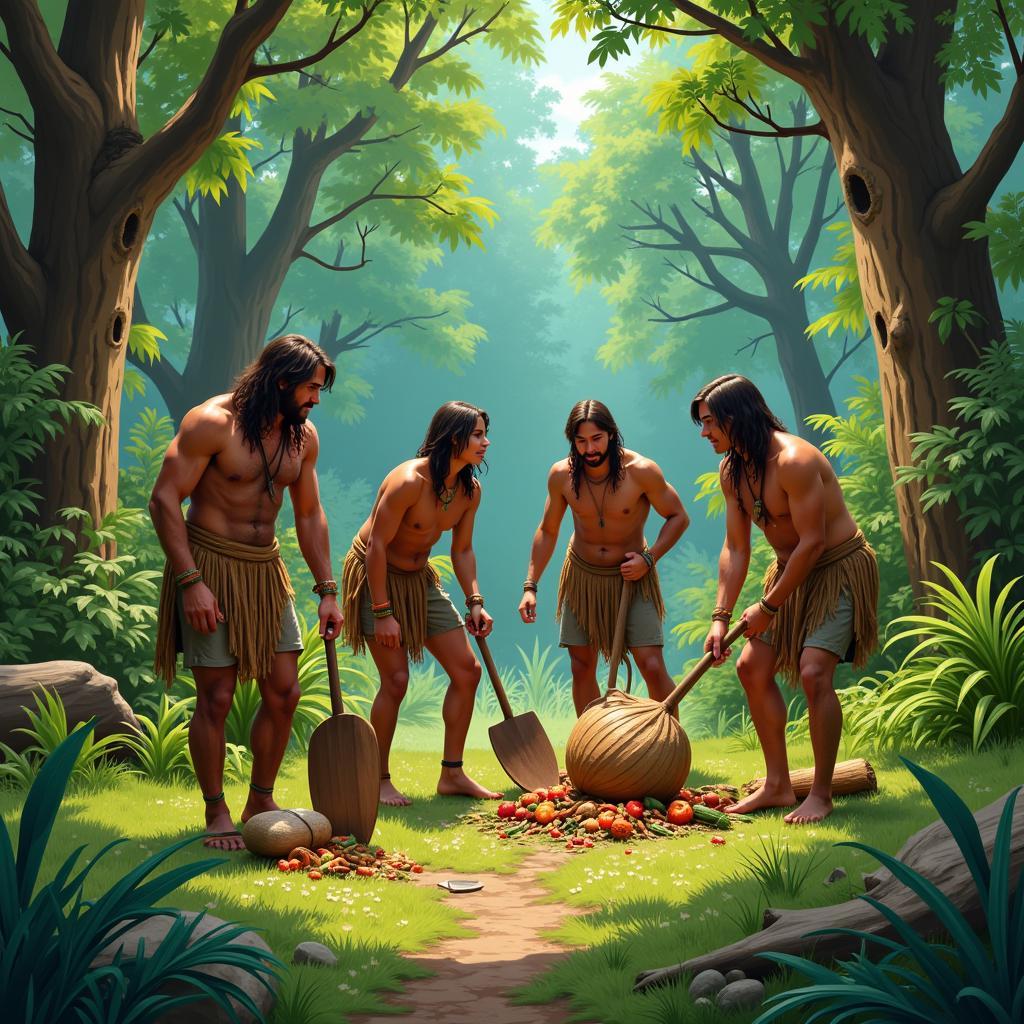The original affluent society, a term coined by anthropologist Marshall Sahlins, challenges conventional notions of affluence and poverty. It proposes that hunter-gatherer societies, often perceived as materially deprived, achieved affluence not through material wealth but through a unique relationship with their environment and needs. This article explores Sahlins’ revolutionary idea, examining its implications for our understanding of societal well-being and economic progress.
Redefining Affluence: The Core of The Original Affluent Society
Sahlins’ concept, introduced in his 1972 book Stone Age Economics, argues that hunter-gatherers were the original affluent society because they achieved affluence by desiring little and efficiently meeting those needs. Their “Zen road to affluence,” as Sahlins termed it, involved a deep understanding of their environment, allowing them to procure necessities with minimal effort. This contrasted sharply with modern consumer societies, driven by insatiable desires and the constant pursuit of more. This begs the question: What truly constitutes a rich life? Is it an abundance of possessions or a harmonious balance between needs and resources? the original affluent society raises these fundamental questions.
 Hunter-Gatherer Affluence Depicted in a Lush Forest Setting
Hunter-Gatherer Affluence Depicted in a Lush Forest Setting
Examining the Evidence: How Hunter-Gatherers Achieved Affluence
Sahlins supported his argument by highlighting several key characteristics of hunter-gatherer life:
- Limited Needs: Hunter-gatherers were not driven by consumerism. Their needs were primarily focused on food, shelter, and social connections.
- Efficient Procurement: They possessed intimate knowledge of their local ecosystems, allowing them to acquire necessary resources with relatively little time and effort.
- Mobility and Flexibility: Their nomadic lifestyle allowed them to adapt to changing environmental conditions and avoid resource depletion.
- Strong Social Bonds: Sharing and cooperation were essential to their survival, fostering a sense of community and interdependence.
These factors, Sahlins argued, contributed to a quality of life that, while materially different from modern societies, was rich in other ways.
Challenging the Narrative: Criticisms and Counterarguments
While influential, the original affluent society concept has faced criticism. Some argue that Sahlins romanticized hunter-gatherer life, overlooking potential hardships like famine, disease, and intergroup conflict. Others contend that the concept doesn’t adequately account for variations among hunter-gatherer groups and their different levels of material well-being. However, the core of Sahlins’ argument – that affluence is not solely defined by material wealth – remains a powerful critique of modern consumerism.
 Modern Society Consumerism Illustrated with Crowded Shopping Mall Scene
Modern Society Consumerism Illustrated with Crowded Shopping Mall Scene
The Original Affluent Society and Modern Implications
Sahlins’ work offers valuable lessons for contemporary society. It challenges us to reconsider our definition of progress and well-being. Do we equate progress with endless economic growth and the accumulation of material goods? Or can we envision a future where sustainability, social equity, and a fulfilling life take precedence? original affluent society compels us to grapple with these important questions.
What can we learn from the original affluent society?
By examining the lifestyles of hunter-gatherers, we can gain insights into alternative ways of living and relating to the world around us. Their emphasis on community, sustainability, and a balanced relationship with nature offers a powerful counterpoint to the excesses of modern consumer culture.
How does the concept of the original affluent society relate to peace?
The principles of cooperation, sharing, and limited needs inherent in the original affluent society can contribute to a more peaceful world. By prioritizing social harmony and environmental balance over material acquisition, we can potentially reduce conflict and promote greater understanding between different cultures and societies.
Conclusion: A Legacy of Challenging Assumptions
The original affluent society, though a subject of ongoing debate, remains a significant contribution to anthropological thought. It challenges us to rethink our assumptions about affluence, poverty, and the very nature of a good life. By understanding the ways in which hunter-gatherers achieved a form of affluence, we can gain valuable insights into building a more sustainable and equitable future, a future where peace and well-being are not measured solely by material possessions but by a deeper connection to ourselves, each other, and the planet. The original affluent society continues to inspire conversations about what truly matters in life.
FAQ
- Who coined the term “the original affluent society”? Marshall Sahlins.
- What is the central idea of the original affluent society? Hunter-gatherers were affluent because they met their limited needs efficiently.
- How did hunter-gatherers achieve affluence? Through knowledge of their environment, limited needs, and social cooperation.
- What are some criticisms of the concept? Some argue it romanticizes hunter-gatherer life and overlooks potential hardships.
- What are the modern implications of this concept? It challenges us to reconsider our definitions of progress and well-being.
- How does it relate to the Society For Peace’s mission? It promotes cooperation and understanding, key elements of peacebuilding.
- Where can I learn more about Marshall Sahlins’ work? His book Stone Age Economics is a primary source.
Need more help? Contact us! Phone: 02043854663, Email: [email protected] or visit us at Khu 34, Bắc Giang, 260000, Vietnam. Our customer service team is available 24/7.